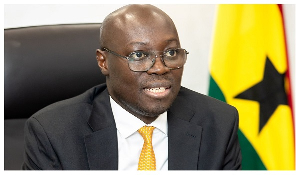Accra, July 16, GNA - Radiographers and X-ray technicians across the country are attending a five-day training course in Accra on the safe use and handling of X-ray machines used in diagnosis. The X-ray machines, though necessary for diagnostic analysis, have the tendency of causing damage to patients, radiation workers and the general public if not properly handled or their use not properly controlled.
Dr. Elias Sory, Director-General of the Ghana Health Services, in a speech read for him, said the health effects as a result of undue exposure of patients, staff and the general public to ionizing radiation needed to be brought to the attention of users periodically to continually remind them of the risk factors. He said the damaging effects of ionizing radiation became obvious only a few years after the discovery of radiation in spite of its importance.
It was for this reason that technicians needed to be reminded constantly on the need for caution, he added.
Dr. Sory said to ensure that Ghanaians enjoyed the full benefits of using ionizing radiations, the Radiation Protection Board was established in 1993 as the national regulatory authority for the control and use of radiation sources, licensing and inspection of practices. "The Radiation Protection Institute (RPI) of the Ghana Atomic Energy Commission was subsequently established to provide scientific and technical support to the Radiation Protection Board," Dr Sory said. It is this institute which has the mandate to continuously upgrade the knowledge of people who use ionizing radiation in the course of their duties.
Professor Geoffrey Emi-Reynold, Acting Director, Radiation Protection Board, said the yearly refresher programmes were to ensure that new radiographers and X-ray technicians who had joined the health service were constantly reminded about the hazards of the vocation and the need to ensure safety measures at all time.
"The other reason for the re-introduction of the training programmes is to bring out some of the research and regulatory findings which hinge on the safety of radiographers and patients who undergo diagnostic X-ray examinations at our health facilities," he said. Citing the case of children as an instance, Prof. Emi-Reynolds said whilst doctors may be looking at the relative risk or likelihood of cancer in their chest, abdomen, skull, knee, feet and the pelvis, exposure to radiation rather exposed them to such conditions.
"The relative risk of these organs during examinations yields high effective doses thus exposing the most radiosensitive tissues in the field of view, including the abdomen and pelvis to higher risk," he emphasised.
He said since examinations were indispensable, the principles of justification and optimization had to be considered seriously when such examinations were being recommended.
"By justification it is implied that the examination should produce a net benefit to the patient whilst by optimization it must be stated that the technique factor should be selected to effectively reduce the exposure dose to the patient and hence reduce risk," he explained. Prof. Cyril Schandorf, Former Director, Radiation Protection Board, who chaired the function reminded the participants to be always mindful of the two key words in their profession namely protection and safety. "Protection is related to people whilst safety is related to the equipment and working environment," he said.
He said the diagnostic benefits to the patients should always out-weight the radiation risk to the patients during the production of radiograph.
Health News of Monday, 16 July 2007
Source: GNA
















